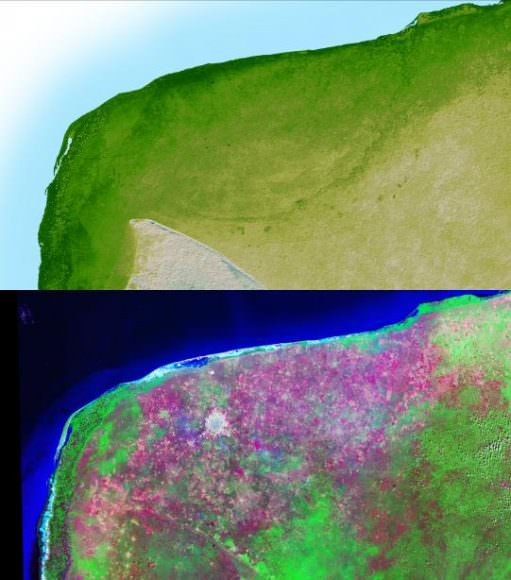It’s an apocryphal image. The ignorant faces of the dinosaurs, roaring helplessly at their fate, and looking skyward as an asteroid plunged to Earth. And the sneaky, clever little mammals coming out of their hiding holes to take their rightful place. If you grew up reading about this version of things, you’re not alone.
The line of reasoning says that mammals were present during the dinosaur’s reign, but their potential to thrive was suppressed by the dinosaurs, which were supremely evolved to dominate conditions on Earth at the time. It took the extinction of the dinosaurs to allow mammals to flourish. But according to new studies, that might not have been the case. As it turns out, mammals may have been well on their way to displacing the dinos long before the Chicxulub meteor hastened the dinosaur’s demise.
One such study, from researchers at the Universities of Southampton and Chicago, focused on hundreds of fossilized mammal teeth. As you know if you’ve been paying attention to how you eat, different teeth have different purposes. Carnivores have sharp teeth designed to rip and shred flesh, while herbivores have duller teeth for grinding up vegetation. Omnivores, like us, have a bit of both. That’s a simplification, of course, but its generally true.
What this study showed is that mammals with varied diets began to appear 10 to 20 million years before the dinosaurs were extinguished. It focused on early therian mammals, which are the ones that gave rise to the modern marsupials (ones with pouches) and placentals (ones where a fetus is carried inside the uterus). The third class of mammal, monotremes, were egg-laying mammals like the platypus.
In recent years, more and more early mammal fossils have been discovered, and they show that mammals were well on their way to diversifying long before the dinosaurs disappeared. The mammal fossil record also shows that mammal diversity suffered from the meteor strike, but mammals recovered and diversified into a greater number of species in the new conditions.
Another study, by Manabu Sakamoto and Chris Venditti from the University of Reading, and by Michael Benton from the University of Briston, shows that the opposite is true for dinosaurs. For tens of millions of years before their extinction, dinosaur species were becoming extinct and new species were not taking their place. This made the dinosaurs more vulnerable to extinction, whereas the diversifying mammals were in a better position to thrive, regardless of dinosaur extinction.
The main threat posed by the asteroid strike was the climate change that followed it. With greater species diversity in place immediately preceding the strike, mammals had a greater probability to survive the changing climate than did their dinosaur counterparts.
Evolutionary biologist and co-author of the study, Dr. Chris Venditti, told BBC News, “The current widespread view is that dinosaurs were reigning strong right up to the impact that hit the Earth – and it’s the impact that drove their final extinction,” he said. “And while that’s certainly true, what we found was that they were on the decline long before that.”

“If they were reigning strong perhaps they would have fared much better than they did,” said Venditti. Dinosaurs had been around for 160 million years and had faced pressures and had dips in their diversity before.
This begs the question, why were dinosaurs in decline?
It likely all revolves around the environmental conditions. At the dawn of the dinosaurs 230 million years ago, Earth was a warm, lush place. Not just near the equators, but all the way to the poles. And there was one single continent, called Pangaea. But it’s the nature of things to change, and change it did.
The climate cooled, the sea level changed, and the dinosaurs were facing new environmental pressures. And as the record shows, the dinosaurs were losing species faster than they could replace them. Chicxulub was more than they could recover from.
Study co-author Mike Benton also talked to the BBC about this study. He said, “World climates were getting cooler all the time. Dinosaurs rely on quite warm climates and mammals are better adapted to the cold.”
“So there might have been a switch over in any case without the asteroid impact.”
Looking back on the older narrative, that the asteroid strike wiped out the dinosaurs, and mammals took their place and became dominant, it looks a little simplistic. But it has a nice narrative hook, and there is the matter of the cataclysmic asteroid strike, which no doubt had a huge effect on life on Earth, any way you want to slice it.
It’s possible that had the asteroid not struck, or had struck a few million years earlier or later, Earth would be a much different place. Perhaps we would not be here, and maybe intelligent dinosaurs would be in our place.
We’ll never know, of course, but it’s a fun narrative.

